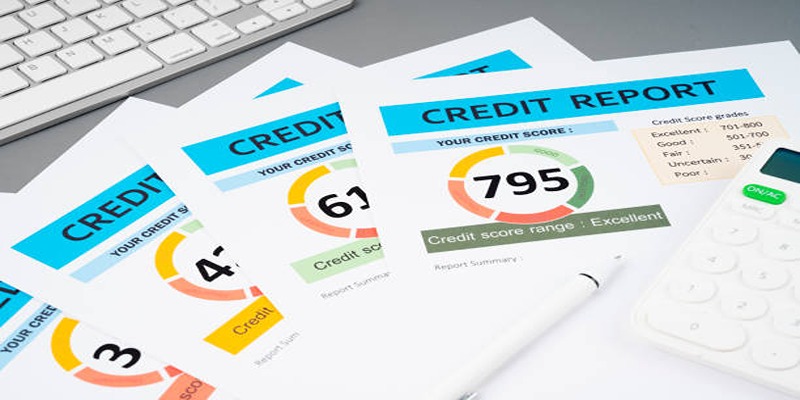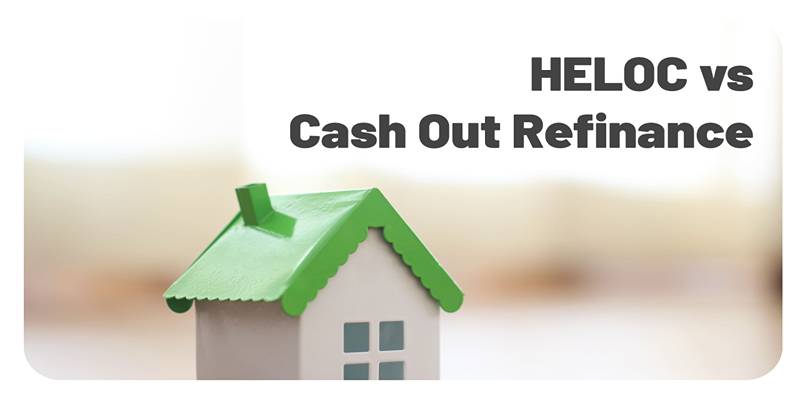Homeowners who have built substantial equity often look for ways to access that value to fund new goals, whether home improvements, paying off debt, or covering major expenses. Home equity lines of credit (HELOCs) and cash-out refinancing are two popular ways to do this.
While both options allow property owners to borrow against their home equity, they operate differently and cater to distinct financial needs. Choosing between them depends on understanding their structures, repayment terms, interest rates, and associated risks.
Cash-Out Refinance
In a cash-out refinance, the old debt is replaced with a new, bigger loan. The homeowner gets the difference in cash from the new loan, which pays off the rest of the original debt. This one-time payment can be used for anything, like home improvements, school costs, or consolidating debt.
Because the process essentially starts a new mortgage, it comes with a new interest rate and a new repayment schedule. If market rates are lower than the homeowner’s current rate, refinancing may also provide the benefit of reduced monthly payments. However, like the original mortgage, a cash-out refinance requires closing costs, which can be significant and should be factored into the decision.
HELOC
A home equity line of credit (HELOC) is a revolving credit line secured by the homeowner’s equity. Instead of receiving a lump sum upfront, borrowers can draw funds as needed during the draw period, typically lasting up to 10 years. During this time, payments are often interest-only, offering low minimum payments initially.
Once the draw period ends, the repayment phase begins, usually lasting another 10 to 20 years, where borrowers must pay both principal and interest. Most HELOCs have variable interest rates, meaning payments can fluctuate over time. This flexibility makes HELOCs ideal for homeowners who want to borrow gradually rather than all at once.
Key Differences Between Cash-Out Refinance and HELOC
Although both options use home equity as collateral, cash-out refinancing and HELOCs have distinct differences. Here’s a direct comparison of the most important factors:
Loan Structure
Cash-Out Refinance: Cash-out refinancing completely replaces the current mortgage with a new, larger one. The homeowner immediately receives the equity as a lump sum and begins repaying under the new loan’s terms. It combines old debt and new cash access into one consistent monthly payment.
HELOC: A HELOC is structured as a second mortgage. It leaves the primary mortgage unchanged and provides a separate credit line. Borrowers draw funds only when needed, giving them greater control over how and when they access their home’s value.
Interest Rates

Cash-Out Refinance: The interest rate on a cash-out refinance is typically fixed, offering borrowers long-term stability with predictable monthly payments. If refinancing when market rates are lower, homeowners might also reduce their overall borrowing cost.
HELOC: Most HELOCs have adjustable rates that can fluctuate based on market conditions. Although initial rates may be lower than those of a refinance, variable rates could rise, leading to higher monthly payments over time.
Access to Funds
Cash-Out Refinance: Borrowers receive a lump sum of money at the time of loan closing. This immediate access is ideal for large, planned expenses that require a substantial amount of cash upfront.
HELOC: With a HELOC, homeowners access funds gradually as needed, up to the maximum credit limit. This flexibility suits expenses that occur over time, such as phased home improvements or recurring educational costs.
Costs and Fees
Cash-Out Refinance: Since it involves originating a new mortgage, a cash-out refinance typically comes with higher upfront costs, including appraisal fees, origination charges, and title insurance. Closing costs can range from 2% to 5% of the total loan amount.
HELOC: HELOCs generally have lower initial costs. Some lenders waive application fees and closing costs altogether, making them more affordable upfront compared to refinancing.
Risk Factors
Cash-Out Refinance: By refinancing, the homeowner extends or resets the mortgage term. If the home’s value declines, they could end up owing more than the property is worth. Additionally, a larger mortgage may strain monthly finances if unexpected expenses arise.
HELOC: Because a HELOC is an additional loan, homeowners must manage two separate obligations: the primary mortgage and the HELOC. If interest rates rise or income decreases, managing both payments could become challenging. After the draw period, increased payments during the repayment phase could also create financial stress.
When a Cash-Out Refinance Is the Better Option?

A cash-out refinance is often best suited for homeowners who seek a large amount of money up front and want the security of fixed interest rates. It is especially beneficial when the homeowner’s existing mortgage rate is higher than current market rates. By refinancing, they can potentially lower monthly payments while accessing their home equity.
It is also a strong choice for those planning significant expenses, such as major home renovations, debt consolidation, or investing in additional real estate. By locking in predictable payments, borrowers gain stability over the long term, which can help with budgeting and financial planning.
When a HELOC Makes More Sense?
A HELOC is ideal for homeowners who need flexible access to funds over time rather than a lump sum. For those tackling expenses in stages or covering costs that may fluctuate, such as college tuition, medical bills, or phased home improvement projects, a HELOC provides unmatched adaptability.
Homeowners with favorable terms on their existing mortgage may also prefer a HELOC to avoid refinancing and losing a low-interest rate. Because a HELOC operates separately from the first mortgage, it offers a way to tap into equity without disturbing the original loan structure.
Conclusion
Both cash-out refinancing and HELOCs present valuable ways for homeowners to access their home equity. Still, the right choice depends on individual financial needs, current mortgage terms, and borrowing preferences. A cash-out refinance suits those needing immediate, large sums and fixed payment security. A HELOC provides flexibility and lower upfront costs, making it ideal for variable or staged expenses.












